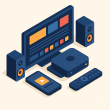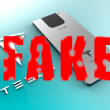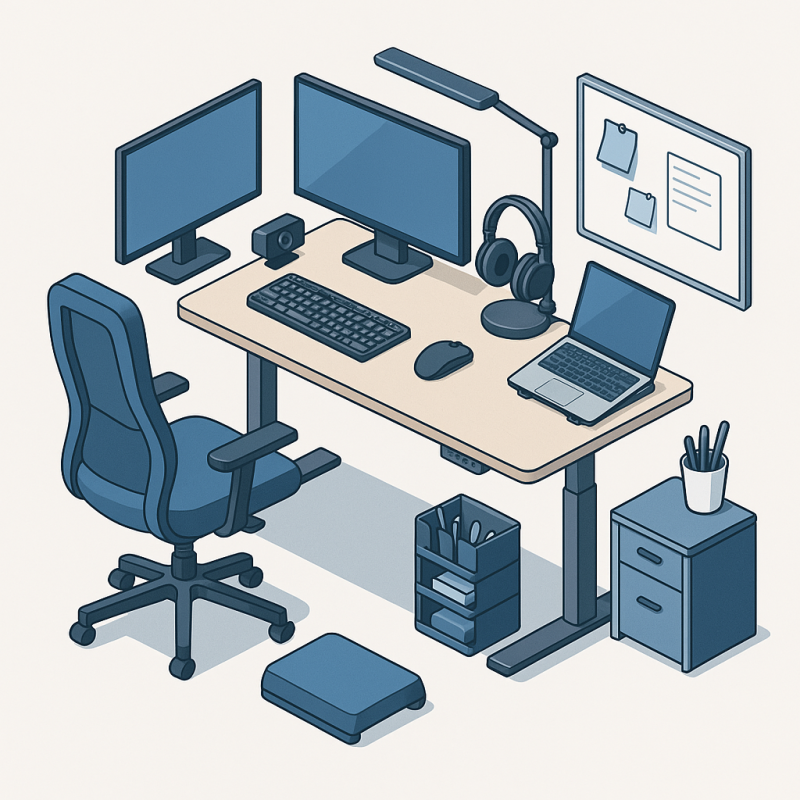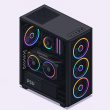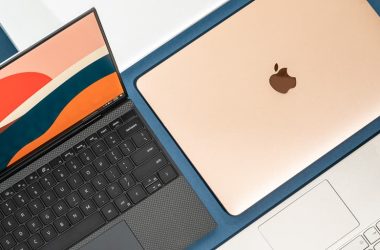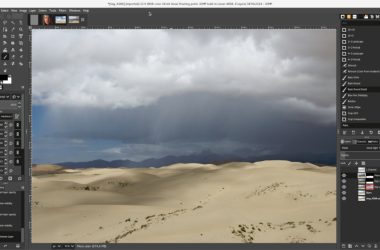Table of Contents Show
Remote work isn’t just a temporary shift anymore – it’s a permanent part of many people’s professional lives. Whether you’re a freelancer, a full-time remote employee, or running your own business from a home office, your work environment plays a massive role in how productive, focused, and even how healthy you are throughout the day.
It’s easy to underestimate how much your physical setup impacts your mental state and output. Sitting in a dining chair hunched over a laptop for eight hours can do a number on your back, neck, and mood. But when your space is optimized, it can help you flow through your day with less fatigue, better focus, and even greater enjoyment.
In this article, we’re diving deep into the 10 must-have accessories every remote worker should consider. These aren’t gimmicks or trendy gear – they’re the foundational tools that make a real difference in comfort, productivity, and long-term health.
1. Ergonomic Chair
Let’s start with your throne – the chair you’ll be glued to for the better part of your day. A good ergonomic chair isn’t just a luxury – it’s a necessity.
Why it matters: Most dining chairs and cheap office chairs offer zero support. Over time, this can lead to lower back pain, poor posture, and even repetitive strain injuries. Ergonomic chairs are designed to support the natural curvature of your spine and promote movement while seated.
Key features to look for:
| Feature | Why It Matters |
|---|---|
| Lumbar support | Maintains natural curve of the lower back |
| Adjustable armrests | Reduces strain on shoulders and wrists |
| Seat height/tilt | Keeps feet flat and hips aligned |
| Breathable material | Keeps you cool and comfortable throughout the day |
Examples: Herman Miller Aeron and Steelcase Leap are popular high-end options, but more affordable models like the Nouhaus Ergo3D offer solid support without the luxury price tag.
Tip: Try before you buy. If possible, visit a store and sit in several models – you’ll know when you’ve found “the one.”
2. Standing Desk
Alternating between sitting and standing helps fight fatigue, improves circulation, and boosts energy levels.
Why it matters: Sitting for hours on end leads to a host of health issues: tight hips, compressed spine, slower metabolism. Standing desks give you options throughout the day to shift posture, stretch, and stay alert.
What to look for:
| Feature | Benefit |
|---|---|
| Electric height control | Easy transitions with minimal effort |
| Memory presets | Quickly switch between preferred height settings |
| Spacious surface | Accommodates dual monitors, keyboard, accessories |
| Stability | Prevents wobble when typing or writing |
Examples: Uplift V2 and Fully Jarvis are top choices. On a budget? The Flexispot EC1 is a solid entry-level electric desk.
Hack: Not ready to commit to a full desk? Try a standing desk converter like the VariDesk – it sits on top of your existing desk and adjusts manually.
3. Monitor or Dual Monitors
A single laptop screen just doesn’t cut it for serious multitasking or detailed work.
Why it matters: Dual monitors can increase productivity by up to 42%, according to a study by Jon Peddie Research. More screen space means fewer windows to switch between, less eye strain, and a smoother workflow.
What to consider:
| Factor | Details |
|---|---|
| Resolution | Aim for 1080p minimum; 4K if budget allows |
| Screen size | 24″ to 27″ is the sweet spot for most users |
| Panel type | IPS panels offer better color accuracy and angles |
| Mount options | Adjustable arms free up desk space and improve posture |
Tip: Arrange your monitors so that your eyes land in the top third of the screen when sitting upright. This reduces neck strain.
Pro setup: One vertical monitor and one horizontal is ideal for writers, coders, and developers.
4. Keyboard and Mouse
This might sound basic, but the type of keyboard and mouse you use can impact your physical health more than you think.
Why it matters: The wrong typing posture can cause carpal tunnel syndrome, tendonitis, and chronic wrist pain. Ergonomic accessories support the natural alignment of your wrists and fingers.
Key things to look for:
| Keyboard Feature | Why It Helps |
|---|---|
| Split design | Reduces wrist ulnar deviation |
| Tent/tilt adjustments | Maintains neutral wrist angles |
| Mechanical keys | Reduces fatigue from soft tactile feedback |
| Mouse Feature | Why It Helps |
|---|---|
| Vertical mouse shape | Keeps wrist in handshake position |
| Trackball option | Minimizes wrist movement |
| Wireless/Bluetooth | Reduces cable clutter |
Great picks: Logitech Ergo K860 keyboard and MX Master 3S mouse. For budget ergonomic options, Microsoft Sculpt or Anker’s vertical mouse work well.
5. Noise-Canceling Headphones
Distractions are the enemy of deep work. Whether it’s barking dogs, chatty neighbors, or noisy construction – noise-canceling headphones help you reclaim your focus.
Why it matters: Sound interruptions break concentration. A study by the University of California Irvine found it takes over 20 minutes to regain deep focus after an interruption.
What to consider:
| Feature | Benefit |
|---|---|
| Active noise-canceling | Cancels background sounds |
| Comfortable ear cups | Suitable for long wear |
| Built-in mic | Clear calls during Zoom meetings |
| Battery life | At least 20–30 hours for all-day use |
Top choices: Sony WH-1000XM5, Bose 700, or Apple AirPods Max if you’re in the Apple ecosystem. For budget-conscious users, Anker Soundcore Life Q30 offers excellent value.
6. Webcam
Blurry, low-light webcam footage can make you look unprofessional on client calls. A good webcam boosts your on-screen presence and clarity.
Why it matters: First impressions count – even virtually. A crisp, clear video feed builds credibility and connection during meetings, interviews, or livestreams.
Look for:
| Feature | Why It Helps |
|---|---|
| 1080p or higher | Clear, HD quality |
| Auto-focus | Keeps you sharp no matter how you move |
| Light correction | Compensates for dim or uneven lighting |
| Field of view | Choose narrow (60–78°) for focus, wide (90°+) for group calls |
Solid models: Logitech C920 is a classic, affordable webcam with stellar quality. Elgato Facecam or Razer Kiyo are great if you stream or want studio-level clarity.
Extra tip: Use a ring light or LED desk lamp positioned behind your webcam for a clean, flattering look on video calls.
7. Desk Organizer
An organized workspace is a productive workspace. Chaos breeds distraction.
Why it matters: Searching for pens, cables, or sticky notes adds unnecessary friction to your day. A good organizer keeps everything in its place, boosting both efficiency and peace of mind.
Types of desk organizers:
| Type | Best For |
|---|---|
| Drawer trays | Pens, paperclips, post-its |
| Cable organizers | USBs, charging cords |
| Vertical file holders | Papers, documents, folders |
| Modular trays | Custom layouts for any combination of tools |
Pro tip: Go digital where you can (e.g., use apps instead of sticky notes), but don’t underestimate the power of a tidy, functional physical workspace.
8. Desk Lamp
Lighting can make or break your work environment, especially in rooms with poor natural light.
Why it matters: Dim lighting causes eye strain, fatigue, and even headaches. A proper desk lamp creates an inviting space, especially during long winter days.
What to look for:
| Feature | Advantage |
|---|---|
| Adjustable brightness | Tailors to day/night and screen brightness |
| Color temperature modes | Cool white for focus, warm yellow for comfort |
| Flexible arm/neck | Directs light precisely |
| USB charging port | Charges devices without extra plugs |
Great models: BenQ e-Reading Lamp and TaoTronics LED Desk Lamp both offer adjustable brightness and color temps.
9. Laptop Stand
Using a laptop flat on a desk forces you to look down, ruining your neck and posture. A stand brings your screen to eye level.
Why it matters: Eye-level screens reduce hunching and forward head posture – a major cause of neck and shoulder pain.
What to look for:
| Feature | Why It Matters |
|---|---|
| Adjustable height/tilt | Allows ergonomic customization |
| Cooling ventilation | Prevents laptop overheating |
| Port expandability | Adds USB-C, HDMI, or charging ports |
| Portability | Folds up for travel or storage |
Popular options: Rain Design mStand, Roost Stand (for travel), or Twelve South Curve.
Pair it with a wireless keyboard and mouse for the ultimate ergonomic setup.
10. Whiteboard or Bulletin Board
Despite the digital age, sometimes the best way to plan and stay on track is with something you can physically write on and see all day.
Why it matters: Writing down goals and to-dos helps offload mental clutter. Visual cues keep you focused, inspired, and accountable.
Ideas for use:
- Weekly to-do list or calendar
- Project tracking with sticky notes
- Motivational quotes or milestones
- Brainstorming mind maps
What to consider:
| Type | Best For |
|---|---|
| Dry erase whiteboard | Easy updates and clean-ups |
| Corkboard | Pinning papers, calendars, inspiration |
| Combo board | Get the best of both |
Cool feature: Try a smart whiteboard like Rocketbook Beacons, which lets you digitize what you write using an app.
Conclusion
Remote work is here to stay, and your workspace is either setting you up for success – or sabotaging your day.
The good news? Small changes can lead to big results. Investing in even a few of these accessories will pay off in comfort, productivity, and long-term health. You don’t need to spend thousands, either. Start with the basics – like a quality chair, headphones, and lighting – and build from there.
Your home office isn’t just a place you work – it’s where you shape your future.


